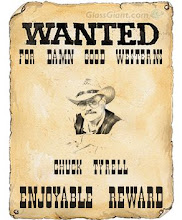From the Tucson Citizen in 1873
Another New Settlement
Newman H. Clanton and family settled on the Gila Valley, a few miles above old Camp Goodwin, August 3rd of this year. He at once laid claim to water, located a line, and now has a ditch two and a half miles in length which carries 1880 cubic feet. There is one body of fully 25,000 acres of very rich land and Mr. Clanton feels sure that with proper management he has water enough to irrigate the whole tract. This year he has cultivated 100 acres and is now preparing and will sow and plant at least 600. He was in Tucson early this week procuring utensils and supplies. He says the settlement now consists of three families . . . in all, fifteen persons, and that more are coming. He is very anxious to have families settle there so that a public school may be opened just as soon as possible. Families will be supplied with a water privilege at the actual pro-rata cost of the ditch, and accommodated with all the information and assistance Mr. Clanton can afford. We have passed over the land and know it to be rich as can be found anywhere. The water of the river is of first quality and the locality is very healthy as far as known. The settlement is near Camp Grant, not very far from Camp Apache and Bowie, and within reasonable distance of the important mining camp of Clifton. All these places must have much grain, vegetables and all sorts of farm and dairy products.
Jump to 1874
Again, the Tucson Citizen
All who live in the Gila Valley near old Camp Goodwin and at Pueblo Viejo are enthusiastic in their accounts of the richness of the soil and the ease with which a man may make a farm.
. . . About 12 months ago, he (Newman Clanton) moved to a point near old Camp Goodwin and about 160 miles northeast of Tucson and within Pima County. The place is now called Clantonville.
The paper goes on to invite one and all to move to Clantonville and obtain “land abundant at government price . . .”
Also in this time frame, Newman apparently ran the Clanton House Hotel at Fort Thomas.
Clantonville did not thrive. In 1877, Newman and sons Phin, Ike, and Billy moved to a ranch on the San Pedro River near Charleston, some fourteen miles from Tombstone.

Terry “Ike” Clanton standing by the single adobe wall left from the old ranch house, ca. 1998. See the Clanton Family website for details.







